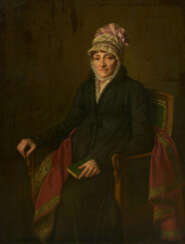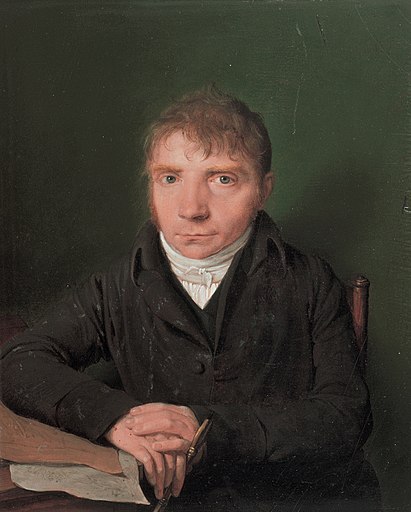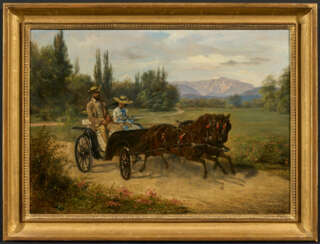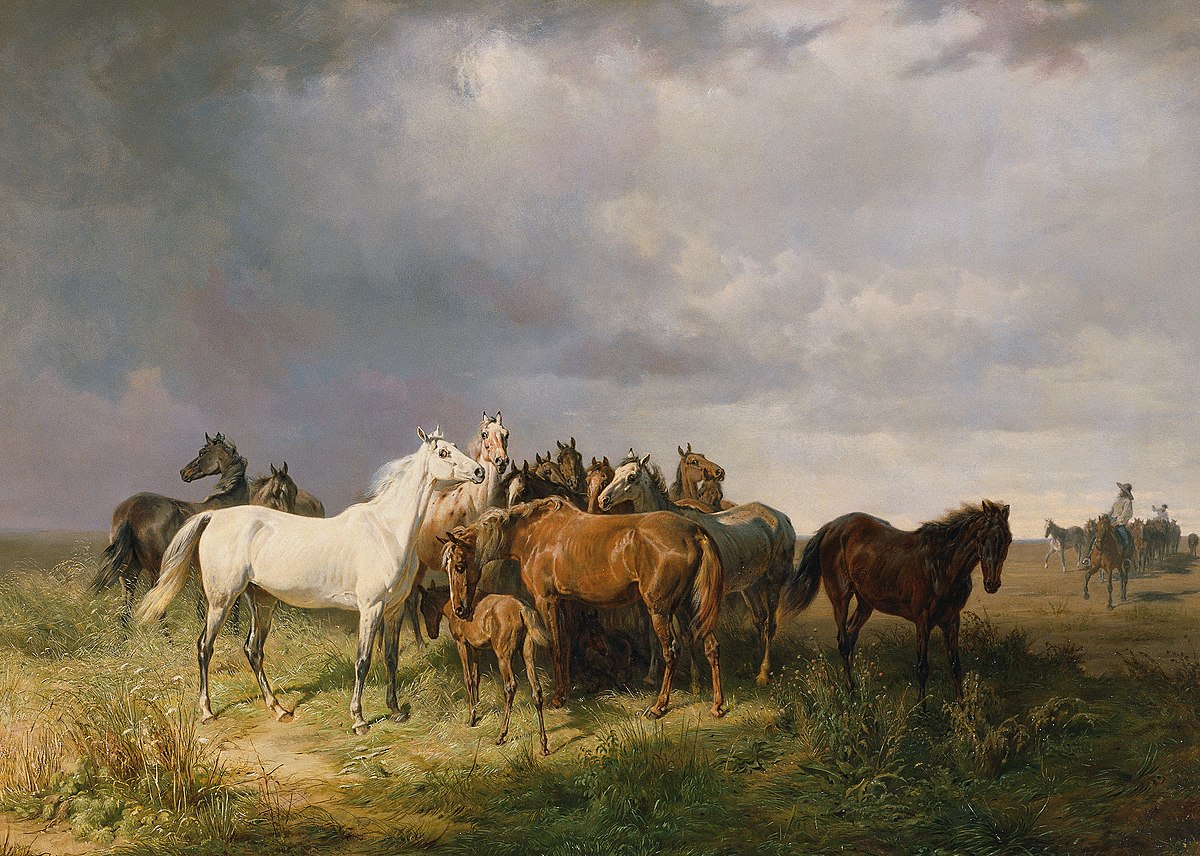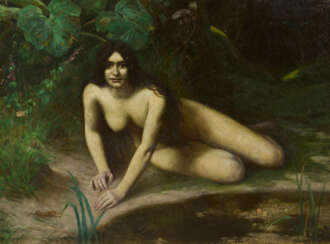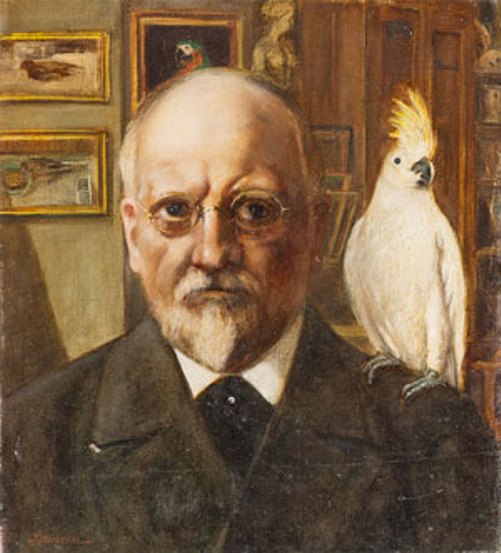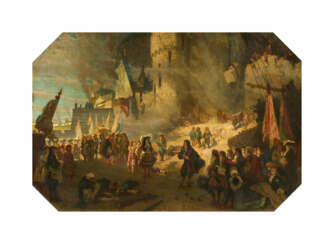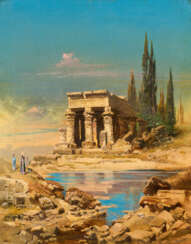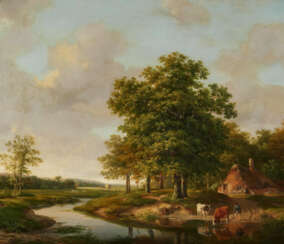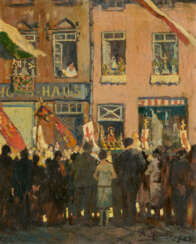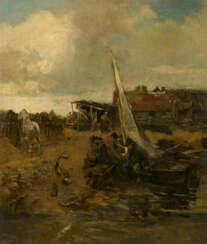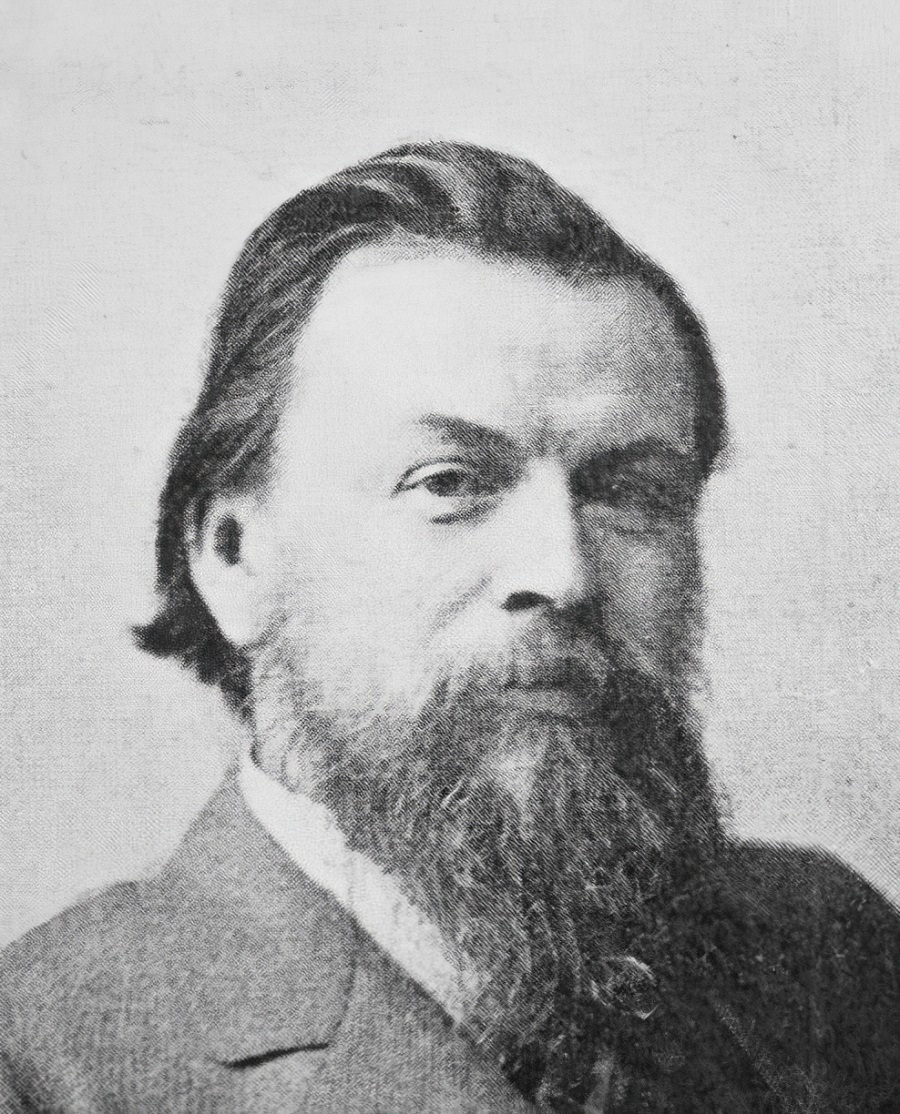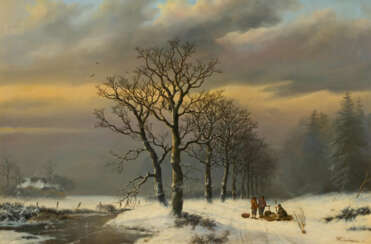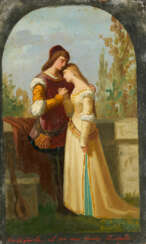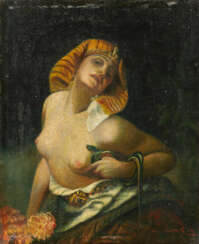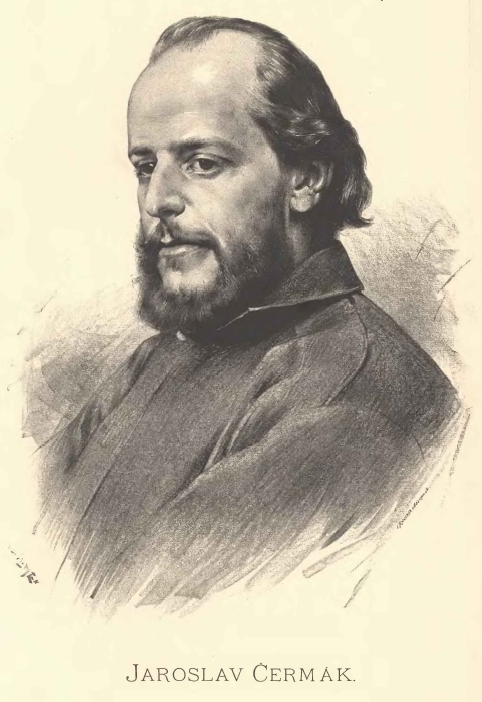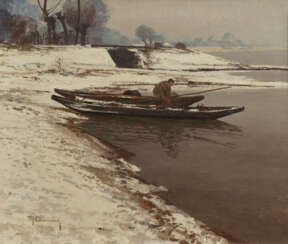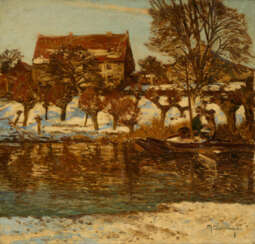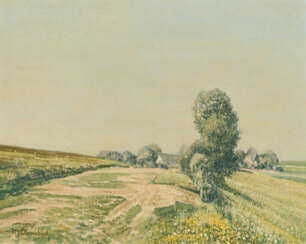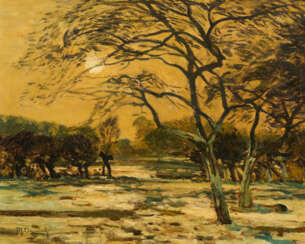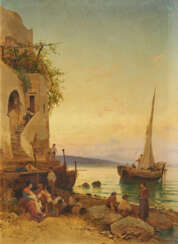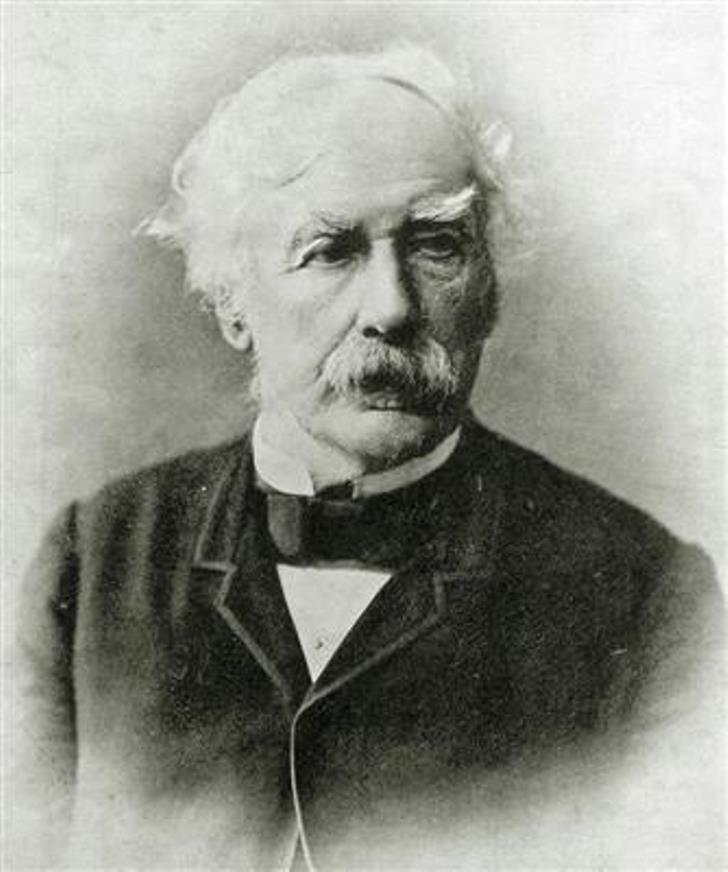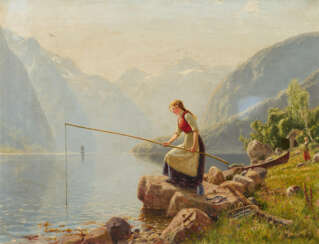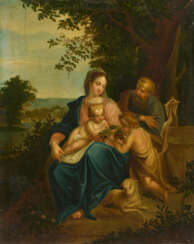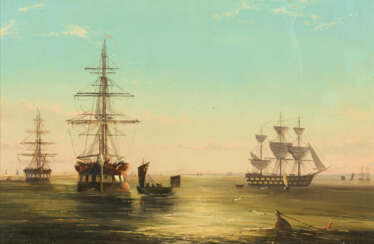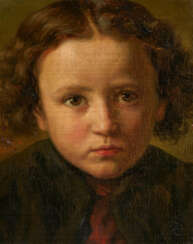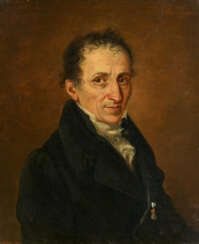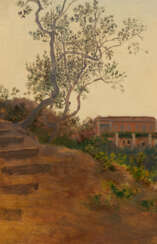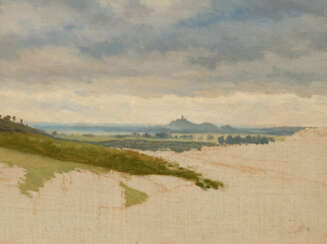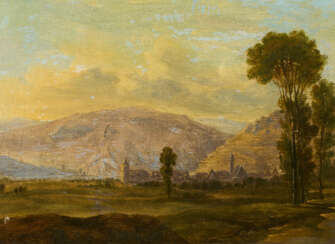
Paintings by newer masters — A528: Art & Interior II
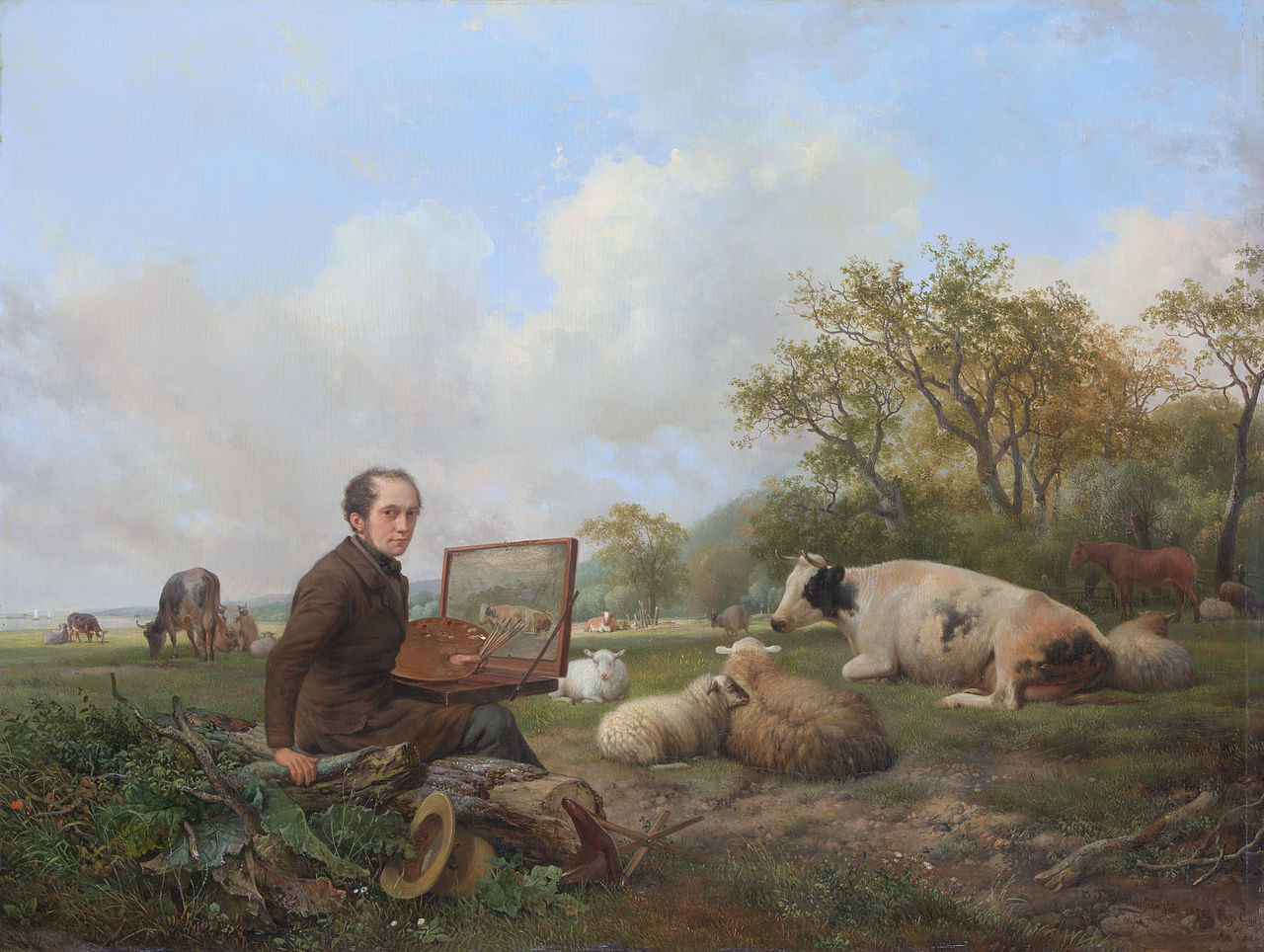
Hendrikus van de Sande Bakhuyzen was a Dutch landscape painter and teacher.
Bakhuyzen studied at The Hague Academy of Art. He is known for his romantic pastoral scenes, especially paintings of livestock, with detailed landscapes.
In 1822 he became a member of the Royal Academy of Arts in Amsterdam and a member of the board of the Academy of Arts in The Hague. He was later elected director of the Hague Academy. Hendrikus Bakhuyzen made a significant contribution to the Romantic period in Dutch art through his work and activities, raising many talented students and followers who founded the artistic movement known as the Hague School.
His children were also very talented: son Julius van de Sande Bakhuyzen (1835-1925) became a renowned landscape painter; daughter Gerardine Jacob van de Sande Bakhuyzen (1826-1895) became a still life painter; son Henrik Gerard van de Sande Bakhuyzen (1838-1923) became a prominent astronomer, member of the Royal Netherlands Academy of Arts and Sciences and director of the Leiden Observatory; son Ernest-Fredrich van de Sande Bakhuyzen was also an astronomer at the Leiden Observatory.
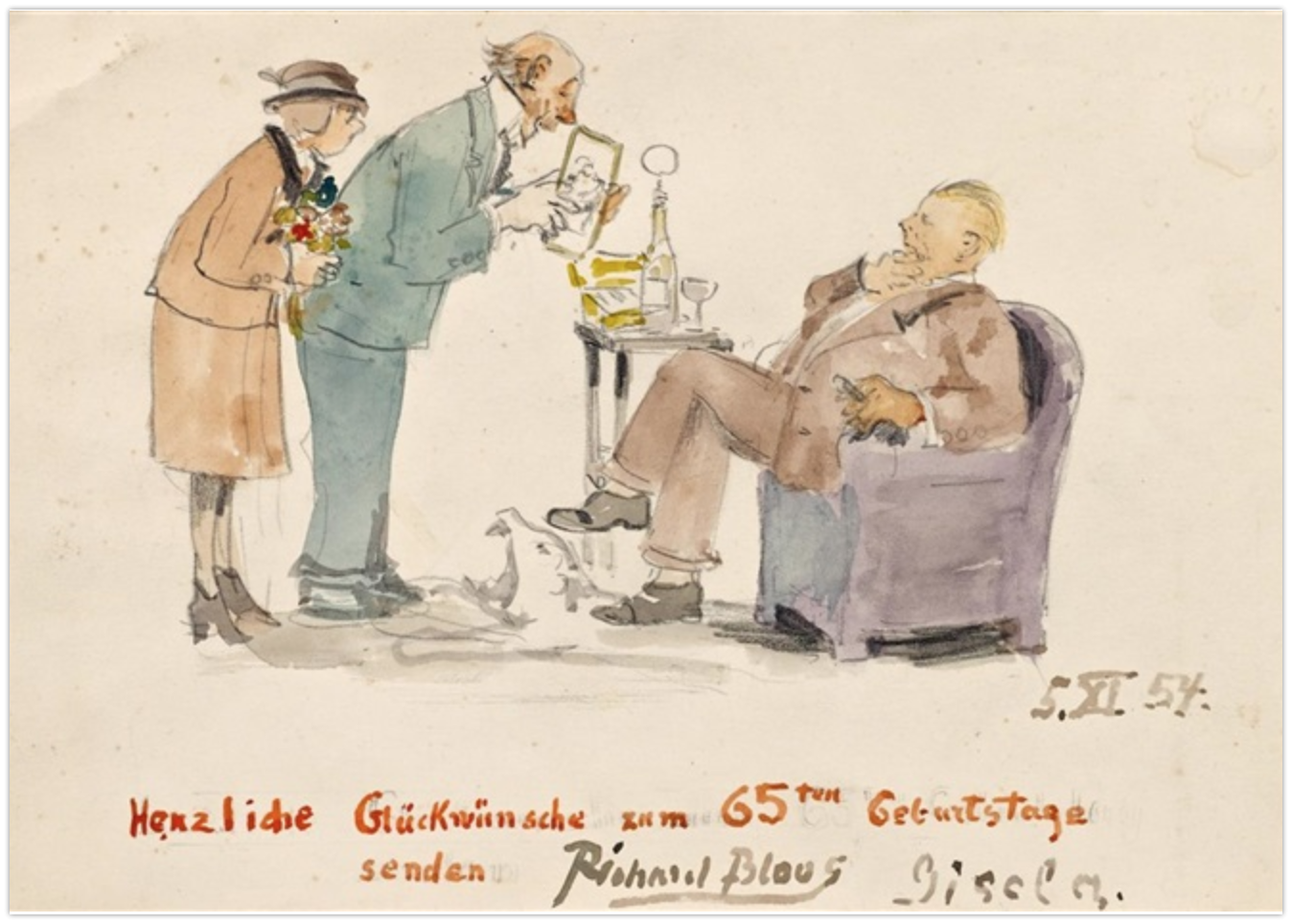
Richard Bloos was born in Brühl in 1878 and attended the Art Academy in Düsseldorf, where he studied under Peter Janssen, Willy Sparrow and Forberg. After a stay in Paris from 1906 to 1914, Bloos lived until his death in Düsseldorf in 1957. He participated in the exhibitions of the Münchner Sezession and the salon of the Société National des Beaux-Arts in Paris. The artist’s preferred motifs are lively figure scenes.
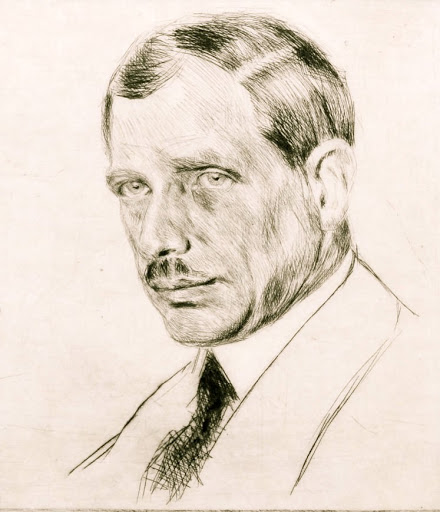
Max Clarenbach was a German painter of the first half of the twentieth century. He is known as a painter, landscape painter, genre painter and teacher and is considered one of the most important representatives of Rhenish painting of his time.
Max Clarenbach made study trips to Italy and Holland early in his career, where he formed his genre preferences and became a landscape painter. His work reflected the influence of the Hague School and the French Barbizonians. The artist skillfully depicted winter scenes and the nature of western Germany. He also painted sports and street scenes.
Clarenbach was one of the organizers of the Düsseldorf Sonderbund and taught at the Düsseldorf Academy of Art.

Max Clarenbach was a German painter of the first half of the twentieth century. He is known as a painter, landscape painter, genre painter and teacher and is considered one of the most important representatives of Rhenish painting of his time.
Max Clarenbach made study trips to Italy and Holland early in his career, where he formed his genre preferences and became a landscape painter. His work reflected the influence of the Hague School and the French Barbizonians. The artist skillfully depicted winter scenes and the nature of western Germany. He also painted sports and street scenes.
Clarenbach was one of the organizers of the Düsseldorf Sonderbund and taught at the Düsseldorf Academy of Art.

Max Clarenbach was a German painter of the first half of the twentieth century. He is known as a painter, landscape painter, genre painter and teacher and is considered one of the most important representatives of Rhenish painting of his time.
Max Clarenbach made study trips to Italy and Holland early in his career, where he formed his genre preferences and became a landscape painter. His work reflected the influence of the Hague School and the French Barbizonians. The artist skillfully depicted winter scenes and the nature of western Germany. He also painted sports and street scenes.
Clarenbach was one of the organizers of the Düsseldorf Sonderbund and taught at the Düsseldorf Academy of Art.

Max Clarenbach was a German painter of the first half of the twentieth century. He is known as a painter, landscape painter, genre painter and teacher and is considered one of the most important representatives of Rhenish painting of his time.
Max Clarenbach made study trips to Italy and Holland early in his career, where he formed his genre preferences and became a landscape painter. His work reflected the influence of the Hague School and the French Barbizonians. The artist skillfully depicted winter scenes and the nature of western Germany. He also painted sports and street scenes.
Clarenbach was one of the organizers of the Düsseldorf Sonderbund and taught at the Düsseldorf Academy of Art.

Max Clarenbach was a German painter of the first half of the twentieth century. He is known as a painter, landscape painter, genre painter and teacher and is considered one of the most important representatives of Rhenish painting of his time.
Max Clarenbach made study trips to Italy and Holland early in his career, where he formed his genre preferences and became a landscape painter. His work reflected the influence of the Hague School and the French Barbizonians. The artist skillfully depicted winter scenes and the nature of western Germany. He also painted sports and street scenes.
Clarenbach was one of the organizers of the Düsseldorf Sonderbund and taught at the Düsseldorf Academy of Art.
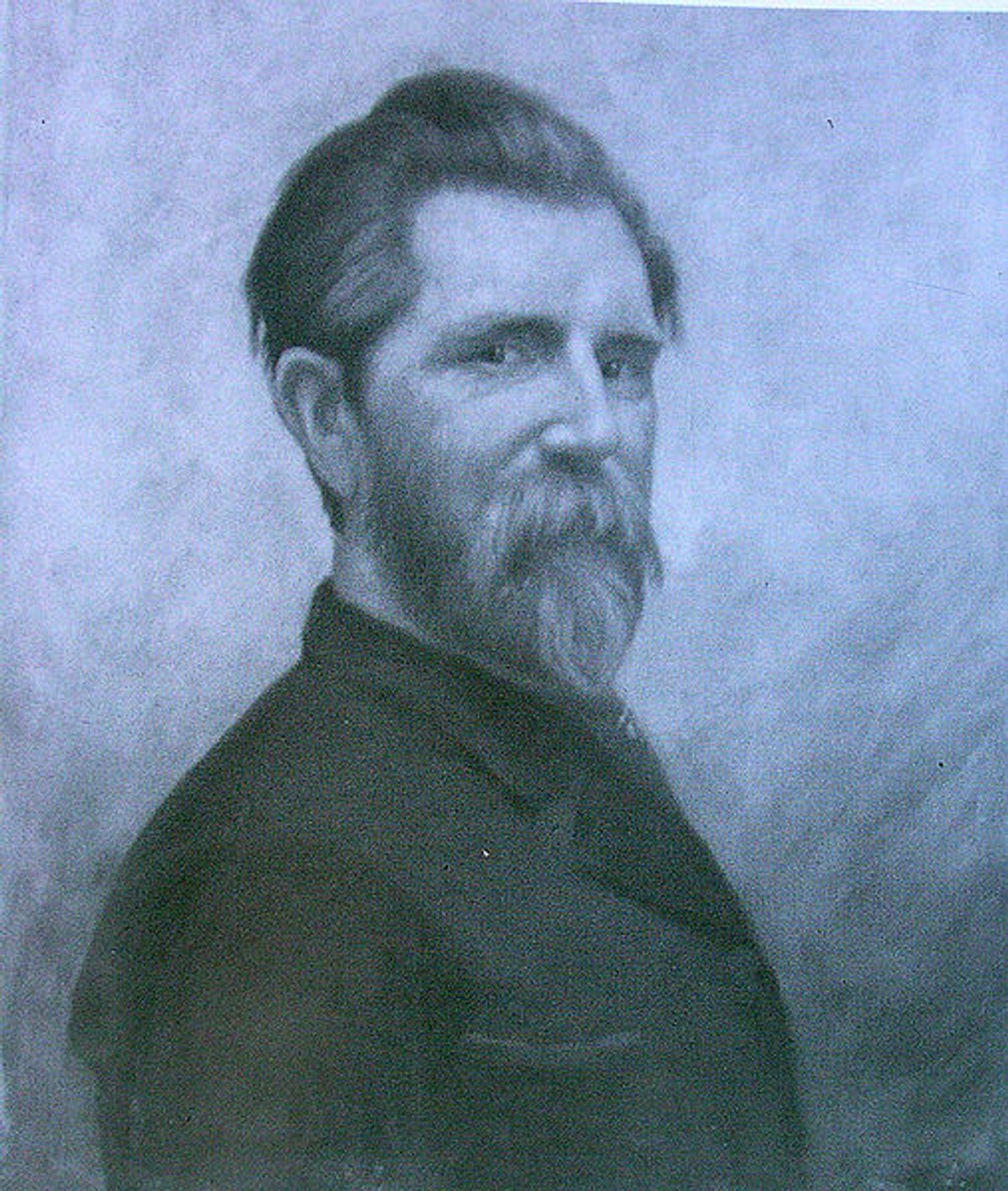
Hans Dahl was a celebrated Norwegian painter. He is best known for his vivid and romantic depictions of Norwegian fjords and the vibrant life around them, capturing the essence of rural western Norway during the late 19th and early 20th centuries. Hans Dahl's art is characterized by its romantic realism, often showcasing young women in traditional costumes against the backdrop of Norway's breathtaking landscapes.
Hans Dahl's technique and color palette were exceptional, employing rubies, aquamarines, sapphires, pearls, and jade to bring to life the red vests of bunads, the blue waters and skies, ivory clouds, and the myriad shades of green in the grassy meadows. His works such as "Arriving for a Celebration" are particularly notable for depicting a lively scene with numerous figures in a composition, a rare approach for Dahl who typically focused on individual or small groups of young women.
His son, Hans Andreas Dahl, also followed in his footsteps but tragically died at a young age. Hans Dahl was honored as a knight of the Royal Norwegian Order of St. Olav, 1st class, in 1902, recognizing his contributions to Norwegian art and culture.
Dahl's paintings, such as "Summerday by Balestrand," "A Young Woman in the Meadow," and "Milkmaid with goats," among others, offer a romantic, nostalgic window into Norwegian culture and landscape, resonating with both Norwegians and international audiences alike. His works have been celebrated for their detailed depictions of village life, the natural beauty of the Norwegian fjords, and the traditional Norwegian way of life, making him a favorite among collectors and enthusiasts of Norwegian art.
For collectors and experts in art and antiques interested in the unique blend of romanticism and realism that defines Hans Dahl's work, staying informed about new sales and auction events is essential. Signing up for updates can provide exclusive access to the latest offerings related to Dahl's paintings, ensuring enthusiasts are always in the know about opportunities to add to their collections.
